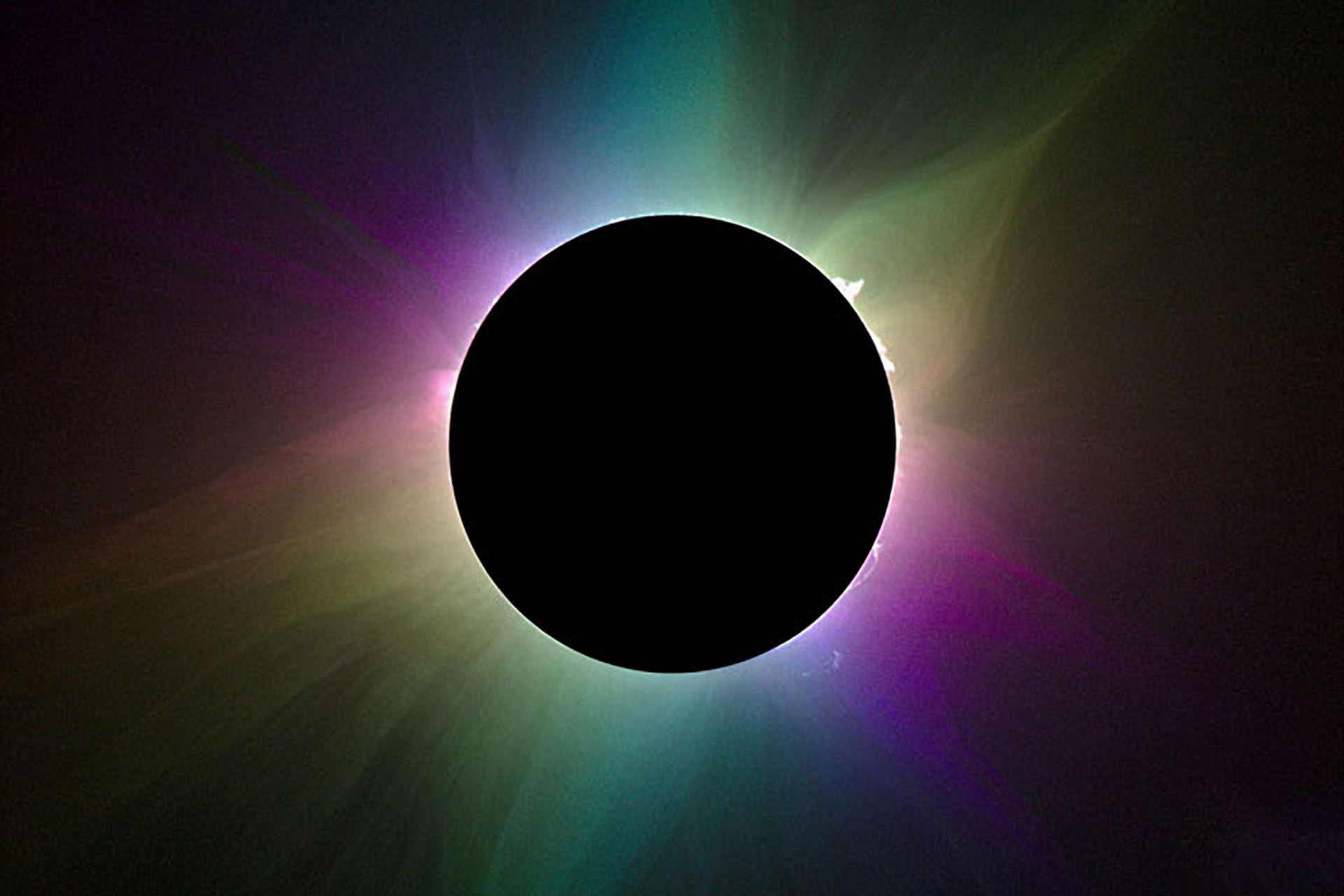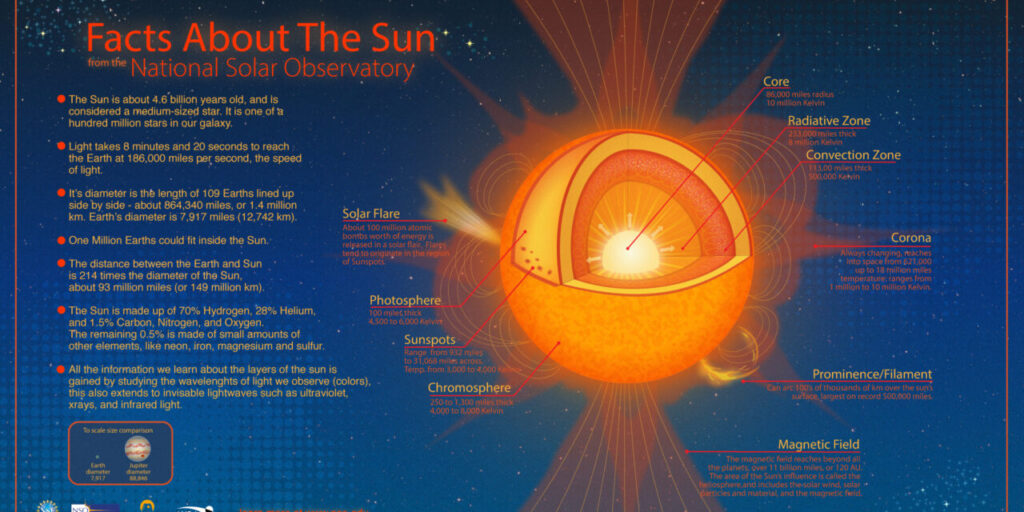
On April 8th, 2024, a total solar eclipse – where the Moon completely blocks out the Earth’s view of the Sun – will cross over the U.S. The path that the Moon’s shadow takes across the Earth, called the Path of Totality, spans from Texas, through the Midwest, and up through Maine. The Citizen Continental-America Telescopic Eclipse (CATE) 2024 experiment addresses compelling open science questions that require the novel dataset provided by multi-point observations across the entire eclipse path. The three main science objectives of CATE 2024 are uniquely suited to coronal imaging possible during an eclipse. This experiment will provide insight into how processes vary across the solar activity cycle, by comparing analyses between 2017, shortly before solar minimum, and 2024, near solar maximum.
Objective 1: Determine magnetic connectivity of the middle corona

Credit: NSF | National Solar Observatory, AURA
The Sun’s atmosphere, the solar corona, is the outermost layer of the Sun. The middle corona is a region of significant transitions, including changes in magnetic structures and plasma properties. This region sets the connectivity between solar surface magnetic structures and the solar wind, but the transition between these is not well understood. The middle corona is difficult to observe because it is too faint for ground-based coronagraphs, and the required resolution is too fine for existing space-based instruments. The high-resolution polarized optics used in Citizen CATE 2024 permit 3D rendering and clarification of the fine structure observed by CATE 2017 and other projects (e.g., DeForest et al. 2013, 2017, 2022), along with direct measurements of electron density (Sivaraman et al. 1984; Habbal et al. 2011). Measuring the electron density of the middle corona will help scientists understand plasma properties in the solar corona.
Objective 2: Measure the growing solar wind flow
The solar wind is a constant stream of ions and particles escaping from the Sun into the Solar System. The amount of solar wind flow is affected by the Sun’s activity cycle and can affect satellites orbiting Earth. The association of slow solar wind flow with particular features in the low corona is a long outstanding open question. The solar wind is highly variable and can be tracked visually throughout the corona over tens of minutes (e.g., Fig. 3; DeForest et al. 2018). Typical eclipse measurements at one fixed location last only 2–4 minutes, making them essentially still frame compared to typical coronal evolution time scales. CATE 2024 offers over 60 consecutive minutes of observations, a sufficient duration to distinguish where the solar wind is flowing throughout the corona. During the ~1-hour high-resolution observation, density features in the middle corona will move a small amount, yielding a unique measurement of solar wind flow.
Objective 3: Identify and characterize reconnection in the middle corona
Magnetic reconnection is a process for converting magnetic energy into other forms on the Sun, such as heat. It is considered the key to understanding nearly all coronal heating and solar wind origination models. This inferred effect is difficult to see with most instruments, but has been detected in images of bright loops and is associated with changing morphology over minutes to hours. Conventional eclipse observations do not span sufficient time to capture changing coronal topology, but the extended observation with CATE 2024 does.
